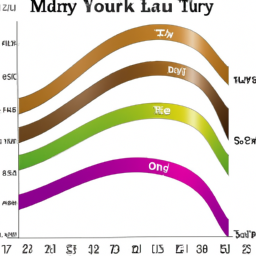U.S. Treasury bonds are considered one of the safest investments you can make. These debt securities are issued by the U.S. government and are backed by the full faith and credit of the country. They offer a low-risk way to earn interest income and are a popular choice for conservative investors.
If you're new to investing in bonds, it can be overwhelming to navigate the different types of Treasury securities available. CNBC Select's resident financial advisor gives you a crash course in bonds, bills, and notes to help you understand the basics.
Here's what you need to know about investing in U.S. Treasury bonds:
Types of Treasury Securities
There are three main types of Treasury securities: bills, notes, and bonds. T-bills are short-term securities with maturities of one year or less, while T-notes have maturities of two to ten years. T-bonds have maturities of more than ten years and offer the highest yields of the three.
Buying Treasury Securities
There are two common ways to buy individual Treasury securities: from TreasuryDirect, the official U.S. Department of the Treasury website, or through a broker. Buying directly from the government allows you to avoid brokerage fees, but you'll need to set up an account and have a bank account to fund your purchases.
Bond Funds
Another way to invest in Treasury securities is through bond mutual funds or exchange-traded funds (ETFs). These funds pool money from many investors to buy a diversified portfolio of bonds. This can be a good option if you don't have a lot of money to invest or if you want a hands-off approach to managing your bond investments.
risk and Rewards
While Treasury bonds are considered low-risk investments, they still carry some risk. Inflation can erode the purchasing power of your returns over time, and rising interest rates can cause the value of your bonds to decline. However, Treasury bonds are still a good choice for investors who want a stable source of income and are willing to accept lower yields in exchange for safety.
Tax Considerations
Interest income from Treasury securities is exempt from state and local taxes, but it is subject to federal income tax. If you invest in Treasury bonds through a mutual fund or ETF, you may also owe taxes on any capital gains when you sell your shares.
Series I Savings Bonds
In addition to traditional Treasury bonds, the U.S. government also offers Series I Savings Bonds. These bonds offer a fixed rate of return plus an inflation-adjusted variable rate that changes every six months. They are a good option for investors who want to protect their savings from inflation and earn a higher yield than traditional savings accounts.
Investing in Treasury securities can be a good way to earn low-risk interest income. However, it's important to understand the different types of securities available and the risk and rewards associated with each. Whether you choose to invest directly in individual bonds or through a bond fund, Treasury securities can be a valuable addition to your investment portfolio.
